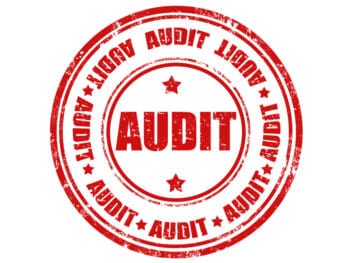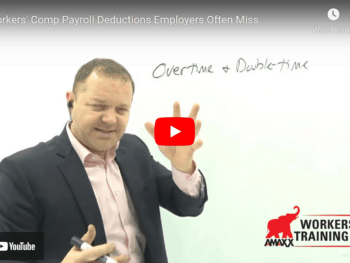Most employers never think about the possibility that their workers’ compensation insurer could go bankrupt. Many risk managers think that with the high premiums work comp insurers charge, there is no way an insurer could go bankrupt, but it happens, and with the state of the economy, it is happening more frequently.
Click Link to Access Free PDF Download
“Workers’ Comp Claims Review Checklist: 9 Must-Have, Serious-Impact Elements”
Insurers Bankrupt From Poor Claims Handling & Inadequate Premiums
There are two primary reasons workers’ compensation insurers go bankrupt – poor claims handling and inadequate premiums. If the claims are not properly adjusted, the poor claims handling results in leakage – payments that are not justified. If the amount of leakage is greater than what the profit margin would be if the claims were handled properly, the insurer has a negative cash flow, which cannot be sustained for an extended period of time.
If the claims are totally handled correctly, but the insurer has not properly underwritten the risk, and the premiums collected are inadequate to cover the cost of operations. Again, the insurer has a negative cash flow which cannot be sustained for an extended period of time.
Every state has financial stability guidelines that insurance companies within their state must comply. These financial requirements include having adequate assets to pay their cost of operations and the expected cost of their claims. When the Department of Insurance or other state agency determines that an insurance company does not have the necessary assets to cover their cost, the initial action taken by the state agency will be to have a court to issue a court order for “rehabilitation”.
Court Appoints a Receiver
When an insurance company is placed in rehabilitation, the court will instruct the “receiver” (often the state insurance commissioner) to take possession of the property of the insurance company [their assets], to conduct the insurer’s business, and take the necessary steps to rehabilitate the company to where it can return to profitability and stay in business.
If the receiver determines that the liabilities of the workers’ compensation insurer are too great to overcome, and the work comp insurer cannot return to being profitable, the receiver will advise the state court. The state court then issues a “liquidation” order requiring all assets of the insurer be used to pay the claims the workers’ compensation insurer has outstanding.
Guaranty Fund Takes Over Payments On Open Claims
Every state and the District of Columbia has a “guaranty fund” which takes over the handling of the open workers’ compensation claims of injured employees residing within their jurisdiction. The guaranty fund is usually a special purpose non-profit corporation of the state. Each state has only one insurance guaranty fund. The guaranty funds of all states belong to The National Conference of Insurance Guaranty Funds.
The guaranty fund obtains the money to pay the claims of the bankrupt insurer by assessing a fee from every other workers’ compensation insurer licensed to do business within the state. The amount of assessment is in proportion to the total dollar volume of workers’ compensation insurance premiums of the assessed insurers.
The good news: the employer does not have to pay the work comp claims of their bankrupt insurer.
The bad news: The transfer of work comp claim files from the bankrupt insurer to the guaranty fund is seldom a seamless process. Often the payment of medical bills, indemnity payments and payments to vendors are disrupted, creating inconvenience and often a quite a bit of hassle for both the injured employee and the employer. Plus, remember one of the primary reason work comp insurers go bankrupt – poor claim handling that created overpayments on claims. Those overpayments of claims are now a part of the employer’s loss history, which will impact the cost of work comp premiums for the next five years.
Carriers Should Be ‘A’ Rated or Better
Employers can protect themselves from having to deal with a bankrupt insurer, whether for property, casualty or workers’ compensation. Employers should always check the financial stability rating of the insurer through A.M. Best, Moody’s or S&P. An insurance company with a financial stability rating lower than A is a cause for concern. If the insurance company has financial stability rating lower than B, the wise employer will ask their broker to find a more financially stable insurance company.
Author Rebecca Shafer, JD, President of Amaxx Risk Solutions, Inc. is a national expert in the field of workers compensation. She is a writer, speaker, and publisher. Her expertise is working with employers to reduce workers compensation costs, and her clients include airlines, healthcare, printing/publishing, pharmaceuticals, retail, hospitality, and manufacturing. She is the author of the #1 selling book on cost containment, Workers Compensation Management Program: Reduce Costs 20% to 50%. Contact:RShafer@ReduceYourWorkersComp.com.
Editor Michael B. Stack, CPA, Director of Operations, Amaxx Risk Solutions, Inc. is an expert in employer communication systems and part of the Amaxx team helping companies reduce their workers compensation costs by 20% to 50%. He is a writer, speaker, and website publisher. www.reduceyourworkerscomp.com. Contact: mstack@reduceyourworkerscomp.com.
©2013 Amaxx Risk Solutions, Inc. All rights reserved under International Copyright Law.













